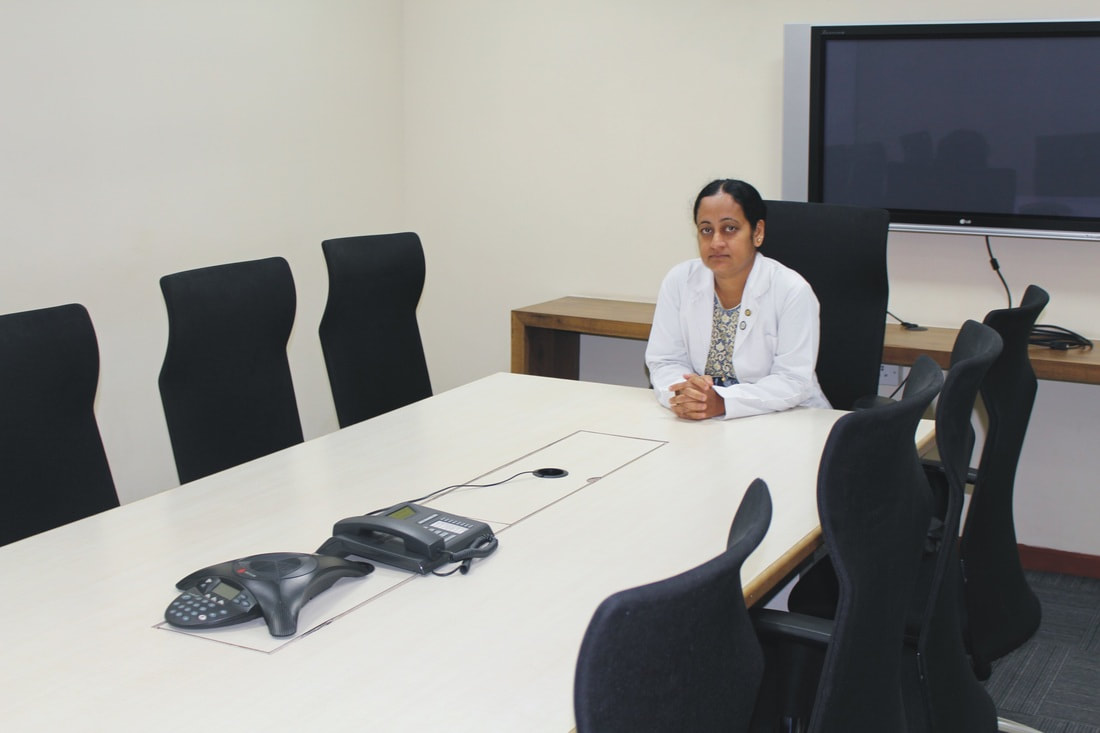|
An unmarried man is an eligible bachelor even during his late 30s or 40s while women don’t find themselves a suitable groom as easy as men once they cross early 30s as the society fears that a woman’s reproduction capability and the strength to bear a child decreases as she grows old. We even fear that the child might be born with disorders and complications. The health of the lady remained the sole priority even before conception to ensure a healthy baby but as our knowledge base is expanding, we seem to accept the fact that men play a vital role too. Their health before conception has a greater say in the healthy outcome of the offspring.
The dad’s age too is being considered as a risk factor for the offspring’s health. Advanced paternal age (APA) at conception has been linked to numerous negative outcomes such as low academic achievement, hyperactivity and suicide. Maternal and paternal age is linked to neurodevelopmental disorders and more prominently enhancing the risk of autism spectrum disorder (ASD). Men who father a child at an older age increase the risk of congenital disorders such as Apert syndrome, craniosynostosis, situs inversus, syndactyly, cleft lip or cleft palate and hydrocephalus. The major reason quoted behind the occurrence of diseases such as ASD and schizophrenia is the prevalence of the increased risk of mutations that occur in the germline of the dads. Hence, getting to understand the relationship between paternal age and ASD can help in shedding light on the biological pathways resulting in ASD. Advanced Paternal Age Increases ASD Risk in Offspring Associating paternal age with ASD risk started as early as during the 1970s and the study elaborated here is a population-based cohort study to test this theory. It includes a total of 3,78,891 individuals born during 6 consecutive years of whom only 3,18,506 of them had data on paternal age at birth. Information on maternal age at birth was obtained for 1,32,271 people using paternal age data. Paternal age was categorized into four groups: 15-29 years, 30-39 years, 40-49 years and above 50 years. Results for age was presented in terms of a 10-year increase in paternal age. Maternal age too was divided into 3 groups corresponding to paternal age categories: 15-29 years, 30-39 years and above 40 years. Results showed that the risk of ASD was around 8.4 cases per 10000 persons. It was observed that the risk of ASD increased with increase in paternal age. There were no signs of ASD risk in offspring of the youngest fathers as fathers younger than 20 years had no offspring with ASD. The risk of ASD almost doubled in men who were 10 years older. Researchers propose that this increase in risk of ASD with increasing age could be due to mutagenesis which was initially called as the ‘copy error’ hypothesis by Penrose according to which new mutations could arise, propagate and accumulate in successive generations of sperm-producing cells. These might be chromosomal abnormalities that could possibly link paternal age with autism. Another reason could be imprinting-a form of gene regulation where the gene expression depends on whether the allele was inherited from the male or female parent in the previous generation. Imprinted genes that are paternally expressed silence maternal gene expression. Only one parental allele is expressed while the other remains silent due to DNA methylation. While the methylation pattern is maintained in somatic cells it is erased and re-established late in spermatogenesis for paternally imprinted genes, a process that could become impaired as age advances-this stands to be considered in the case of autism. Effect of Paternal Age in Neurodevelopmental Disorders We repeatedly research and talk about the link between APA and ASD as autism is more common these days that earlier but it was schizophrenia that was the first neuropsychiatric disorder that was linked to APA. Various studies showed that the risk of the disorder increased with paternal age increase though the risk degree differed between the studies. Risk for the disorder was already high for offspring of fathers in their mid-to-late 30s increasing as the paternal age increased. Those in their 40s during conception were at a 2-3 times increased risk of becoming a dad to a schizophrenic child compared to those in their 20s during conception. The link between APA and autism was reported first by Reichenberg et al. The risk with increase in age was on similar lines as for schizophrenia-greater risk in those aged mid-30s and above during conception. Those studies focusing on the transgenerational persistence of APA-autism link showed conflicting results that the age of the maternal grandmother and maternal grandfather was linked to a higher risk of autism. Sullivan et al. reported that family history of schizophrenia and bipolar disorder was a risk factor for autism. Likewise, the presence of autism during early stages of life increases the risk of schizophrenia development during later stages. The reasons behind this link is usually attributed to genetic factors or genetic mutations in paternal gamates that arise as a consequence of ageing. The behaviour of men delaying fatherhood generally includes social withdrawal and social aloofness that’s greatly related to a higher genetic risk for autism or schizophrenia. Kids born to men with genetic variation are at an increased risk of such disorders irrespective of the father’s conception age. Though a study by Nilsen et al. showed that men who fathered their first child at an advanced age were surrounded by health problems and risky health behaviours other studies did not find any link between behavioural traits and paternal age. We have numerous debates surrounding the inherited vs de novo effects of APA. Comparison effects of delayed fatherhood and advancing paternal age many studies support that it’s delayed fatherhood that’s increasingly linked to risk of schizophrenia. But a study by Hultman et al. showed that the child with the disorder is generally born later in the father’s life showing that age-dependent factors and not men’s stable traits affect its prevalence. All of the published animal studies show that advanced paternal age at conception is related to behavioural changes relevant to autism and schizophrenia. Genetic Mutations An infant is born unto this world with around 60-80 genetic mutations but these are enhanced to a greater degree in individuals with autism and schizophrenia. Genetic mutations that multiply as the paternal age increases affect the APA effect to a greater extent. Research shows that mutation rates double every 16.5 years expressing the risks associated with delayed fatherhood from the age of 25 to 40. Age-related increase in genetic mutations is larger in male than in female by almost 3-fold times and most of the genetic mutations in offspring are primarily from the father. Selfish Spermatogonial Selection According to this hypothesis, stem cells with mutations at certain loci gain selective advantage over non-mutated spermatogonial stem cells expanding clonally and becoming prominent in the germline. Activating mutations involved in receptor tyrosine kinase pathway enhance growth processes leading to abnormal proliferation of spermatogonial stem cells that carry these mutations via a process called oncogenesis. The disease phenotypes linked to the mutations make it unlikely for the mutations to be passed over multiple generations making it mostly unsuccessful for extrapolating the hypothesis for complex disorders like autism and schizophrenia. A study by Goriely et al. showed that the genes that were responsible for the selfish behaviour of spermatogonial stem cells belong to the RTK/RAS/MAPK pathway-one of the molecular modules that’s rich in deleterious variants in neurodevelopmental disorders. It is a common opinion among researchers that analysing the selfish selection hypothesis plays an integral role in triggering genetic mutation origins of APA effects. APA and neuropsychiatric disorders also change based on epigenetic effects -the epigenetic markers regulate gene expression in offspring showing that paternally acquired factors affecting the offspring go beyond those proposed by the genome sequence alone. DNA Methylation: This is the commonly studied epigenetic modification playing integral role in gene regulation. DNA methylation marks are stable, modification acquired are maintained in daughter cells accumulating over paternal lifespan in a similar fashion as de novo genetic mutation. It is to be noted that epigenetic programming occurs twice during fertilization-once before birth in embryonic primordial germ cells and then followed by establishment of new methylation patterns that’s different in male and female embryos. The programming once again occurs at fertilization. Ageing brings about changes in epigenetics and DNA methylation levels help in predicting chronological age of humans. It was Malaspina in 2001 who first proposed that age-related epigenetic modifications mediated APA effects. But, age-related disruption of normal DNA methylation in gametes cannot account for the father-to-offspring transmission of the APA effect. Even before the blastocyst stage paternal methylation marks are erased with only those in the imprinted regions remaining in the embryo’s somatic cells. So, the time frame within which paternally acquired non-imprinted DNA methylation marks could affect offspring development is scarce. Genomic Imprinting: Imprinting is a complex phenomenon where differential DNA methylation in paternal gametes is linked to monoallelic gene expression in offspring. These imprints are seen in parental germline, inherited after fertilization, erased in fetal germline and later re-established in the offspring. The imprinting regions regulate gene expression which are found in both sexes and autosomal chromosomes characterized by age- and tissue-specific expression patterns. They also play a vital role in early development regulating placental formation and functioning and also early brain development. The parental imprints in the germline could be present in the somatic offspring cells conveying the message that imprinted genes could be involved in mediating APA effects. Various studies have shown a number of neurodevelopmental disorders (such as Prader-Willi syndrome or Angelman syndrome) that have resulted as an outcome of errors in imprinting. But we have no research in humans that supports the theory that imprinting errors affect APA effect. It is hence seen that inherited and de novo factors contribute to epidemiological observations. But the evidence does not suggest that older men should refrain from having a child. There is a low occurrence rate of these disorders at baseline and a 5-fold increase in odds ratio even under a strong de novo effect gives us a low probability that the offspring will suffer from autism or schizophrenia due to a high paternal age. Studying the Effects of Paternal Age on Twins The present study uses a population-based sample of twins (Twins Early Development Study [TEDS]) to test the effect of paternal age on offspring behaviour. A study by Lundstrom et al. proved that the effects of APA was observed in the offspring only when he/she was around 9 years. Sample size from the TEDS study-of more than 15000 twin pairs-were collected. These individuals were assessed of their social functioning skills at age 4, 7, 9, 14 and 16 respectively. Social development was measured using parent’s (mostly mothers) rating of the Strengths and Difficulties Questionnaire (SDQ) that helped in analysing both good and problematic aspects of childhood behaviour between 4 and 16 years. The questionnaire mainly focused on five subdomains including conduct problems, emotional symptoms, hyperactivity, peer problems and prosocial behaviour. The effect of paternal age on all five subdomains was checked through five questions scored from 0 to 2 such that the maximum score possible for the subdomain was 10. Contrary to other domains, high scores in the prosocial domain indicated less problematic behaviour. Results showed that there was a significant link between paternal age and differences in social development in the general population with no effect on behaviour domains. Some kids born to older fathers find it difficult in social settings and the challenges they face increase as they get older. Genetic influence on social development is most pronounced on offspring of the oldest group of fathers. References Advancing Paternal Age and Autism: https://jamanetwork.com/journals/jamapsychiatry/fullarticle/668208 Advanced Paternal Age Effects in Neurodevelopmental Disorders-Review of Potential Underlying Mechanisms: https://www.ncbi.nlm.nih.gov/pmc/articles/PMC5299396/pdf/tp2016294a.pdf Paternal Age Alters Social Development in Offspring: https://www.ncbi.nlm.nih.gov/pmc/articles/PMC5409803/ Comments are closed.
|
AVOID FRAUD. EAT SMART+91 7846 800 800
|
- Home
- Written Testimonials
- Consult
- Clinics
- Blogs
-
Diet & Nutrition
- Diabetes Reversal
- IVF IUI not needed for PCOS PCOD Infertility
-
Medical Nutrition
>
-
Disease & Conditions
>
- Infertility | PCOS
- Diabetes Mellitus
- Cholesterol
- Hypothyroid
- Kidney Problems
- Hypertension
- Cardiovascular Diseases
- Liver Diseases
- Gastro intestinal disorder
- Cancer
- Metabolic Disorders
- Orthopedic Disorders
- Eating Disorders
- Dietary Recall
- Weight Record Filled By Clients
- Online Payment Transaction Details
- Online Clients Weight Check Form
- Our Program Package Service Charges
- Weight Record 2017 Clients
- Measurements sent by Clients
- Terms & Conditions Of Payment
- Thanks. Your Form is Submitted
- Video Testimonials
- Lifestyle & Wellness
- Lifestyle & Wellness Blog
- Allergy & Intolerance
- Weight Loss / Gain
- Weight Loss / Slimming Blog
-
Disease & Conditions
>
- Life Cycle Nutrition >
- Sports Nutrition >
- Integrity in Nutrition
- Knowledge Centre
© COPYRIGHT 2022. ALL RIGHTS RESERVED. FRST HEALTHCARE PVT LTD.
Dr. Nafeesa Imteyaz of First Eat Right clinic, is the Best Dietitian Nutritionist in Bangalore. Best Dietitian Nutritionist in Pune. Best Dietitian Nutritionist in Hyderabad. Best Dietitian Nutritionist in Chennai. Best Dietitian Nutritionist in Mumbai. Best Dietitian Nutritionist in Delhi. Best Dietitian Nutritionist in Kolkata.



